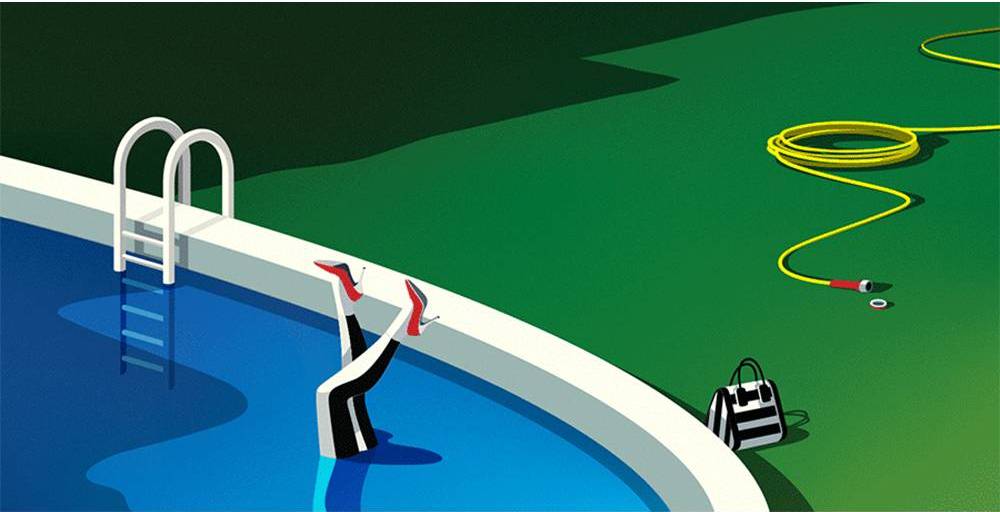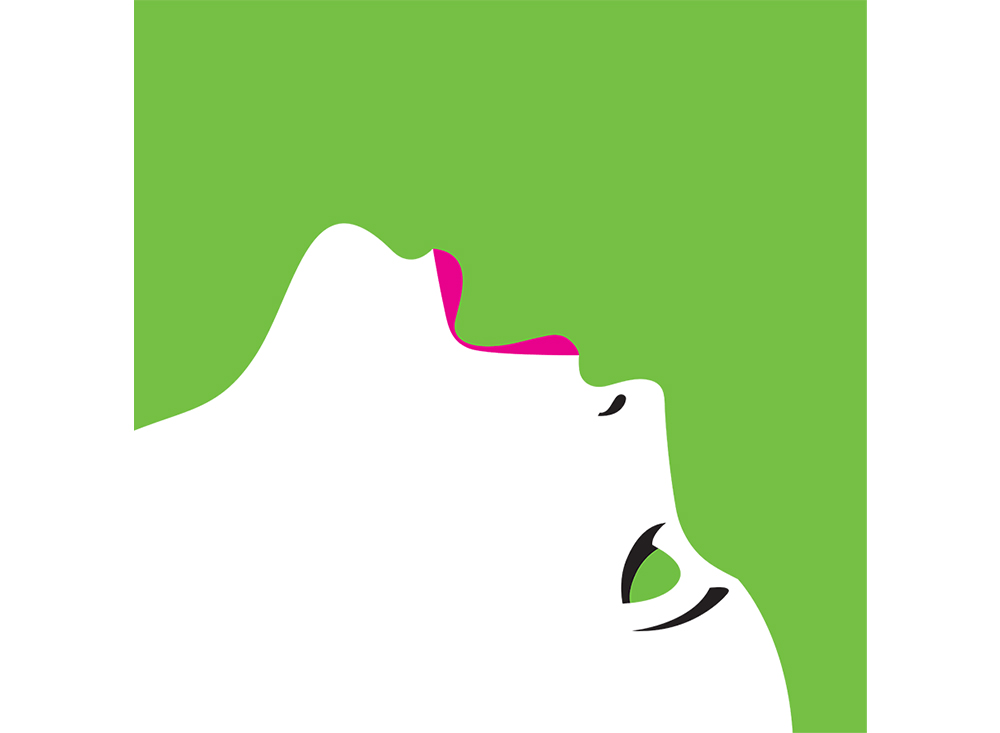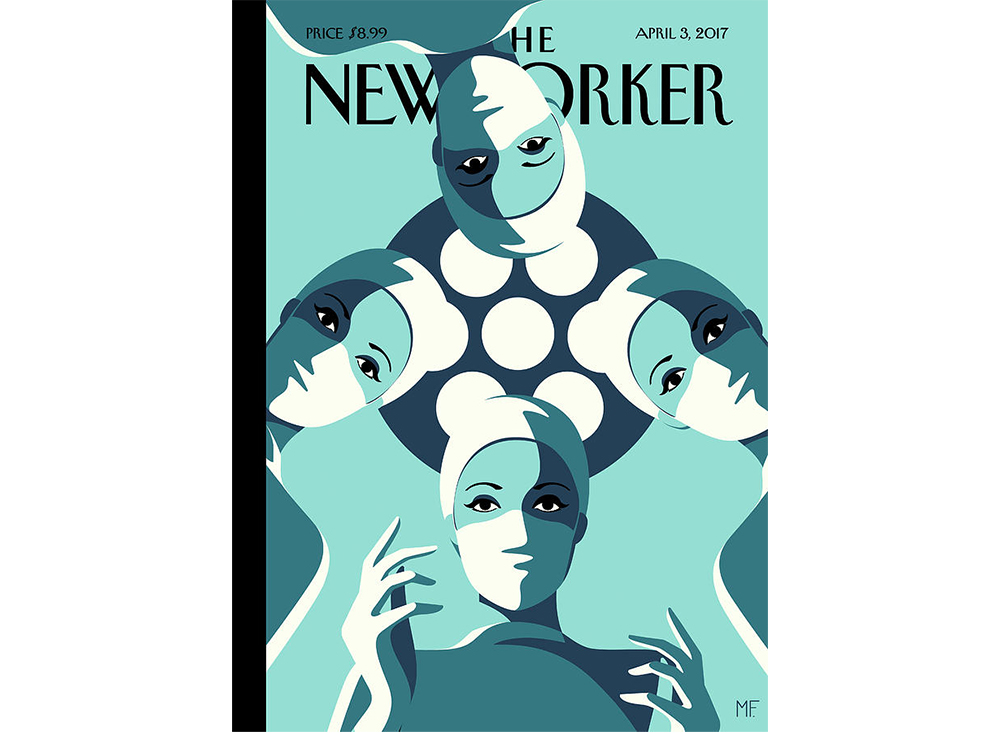Bold, minimal, colorful: The design tales of illustrator Malika Favre
Malika Favre’s art is all about humor, re-imagining the ordinary, and a touch of sexiness. The illustrator gained attention with her extensive use of bold colors, and minimal style, achieved popularity with her Alphabunnies and took the scene’s hearts by storm by empowering women through her art. In our interview, Malika Favre speaks about sources of inspiration for her distinctive style, the female body, and choosing the perfect colors for her work.
You are quite the industry legend and create illustrations that are unmistakably you. What has influenced your distinctive style?
Developing my style was a long and organic process. It was a bit like: “The more I practiced, the luckier I got.” I think that my illustrative style today is a sum of a few of my big crushes (Bauhaus, Bridget Riley, Rene Grau, Op art and Esher in particular, Pop Art, Saul Bass…) and many little things that I was exposed to growing up. I reckon the latter ended up influencing me on a deeper level somehow: My love for science and geometry, my mum’ s obsession with colorful objects, Paris, the 1000 movies I watched as a kid, and so on. The way I draw today and the decisions I make are the sums of all these parts.

You define your work “Alphabunnies” as your breakthrough moment. What made that project so special that it shaped your following works?
This piece was a breakthrough in the sense that it was the first-ever piece of illustration that I felt was truly mine. For the first time, I had managed to mix what I love about graphic design and its visual simplicity with the essence of the pencil sketches that filled my sketchbooks for years. When finishing Alphabunnies I really felt I was onto something exciting and new. It later led to the Kama Sutra alphabet of course but on a broader level, it shaped how I approach illustration up to today: by paring shapes down to a minimal and telling complex stories with very few elements.

Is there a mission to your work that is driving you to push further?
Beauty, in the deep sense of the term, is at the center of my work and I believe it is a very powerful way to connect with people, no matter their background, education or culture.
There is no big mission as such, or not a conscious one at least, to what I do. I just love drawing and telling stories that matter to me. Seeing my work resonate with a broad range of people and empower other women is what truly motivates me.

The female body and its curves are a reoccurring topic in your work. What makes these motives so interesting to visualize?
It goes back to this idea of beauty, really. Women as a theme have always been at the core of my work. I just love the curves, strength, and sensuality of the female body. This fixation comes from my childhood and never left me. Drawing women has always been a way for me to understand my own body and to learn to love it. These women are never decorative, they are independent, daring, powerful and the heroines of their own story.
Bold colors, especially red and blue, are essential for your art. How do you choose the colors for each artwork?
That is a bit of a mystery. I absolutely love the red and blue combination as it creates a visual clash. Kandinsky described it as plunging a “red-hot iron in cool water” and this is exactly why I love this combination so much. We could say these are my default colours but not the only palette I use in my work. Choosing colors is a very intuitive process for me. I just go with what feels right and it adds to the story. I see color as a strong narrative tool.

You started working as an independent illustrator back in 2011. How has that step affected your creativity? Have you become more creative ever since quitting your 9-5 job?
When I decided to quit my 9-5, all of a sudden I truly felt free and fully in charge of my life, which was the goal all along. I think I was meant to work for myself so it came very naturally to me and I never looked back. That being said, my job at Airside was pretty cool for a 9-5 job: a lot of creative freedom, great clients, and even greater colleagues. It was kind of a halfway house haha.
I left because I wanted to rule my work (and life) on my own terms, choose my clients, decide when to say yes and when to say no, take as many holidays as I wanted. It meant a lot of hard work and patience but I eventually got there. I don’t know if leaving improved my creativity but it sure improved my sense of freedom.
Your art adorns several magazine covers, like Vogue, The New York Times, or the New Yorker Magazine. Does a big commission like this affect your usual creative flow in any way?
Editorial covers are a big part of my creative flow these days and actually are my favorite type of project. When creating editorials, I can be more creative and spontaneous compared to when working for commercial clients. Creating a cover for a publication is like doing gymnastics: it often requires thinking fast and being quick on your feet. But taking the risk, is extremely rewarding, in my opinion.
Which one has been your favorite cover art so far?
Probably the “Operating Theatre” cover I did for “The New Yorker”. We received an overwhelming response and actually sparked a viral movement. Another favorite of mine was “Start your engines” for Arab News as the theme was very personal to me.

Where do you keep on finding inspiration?
Making sure to spend enough time actually living my life outside of work. And traveling is a big source of inspiration for me as well.
Creative work is known to be accompanied by a lot of doubt. Do you think self-doubt is necessary in a way in order to create something extraordinary?
Self-Doubt is inherent for any creative self, I think. It probably prevents us from turning into arrogant divas but it’s also important to believe in yourself or else you might get stuck.
How do you overcome creative blocks?
I sleep on it. It usually works.
What is your advice for aspiring creatives and artists, who are just getting started in the industry?
Be patient, trust the process, and put in the work. Oh, and also be nice to people!

If you could change anything about the creative industries, what would it be?
I would empower risk-takers when it comes to making decisions (rather than leaving it in the hands of marketing teams).
What will the future of illustration look like?
No bloody idea. I am not one for predicting what comes next 😉

Malika Favre is one of our headliners at Forward Festival Berlin 2022, where she will share more about her creative process and her current projects.